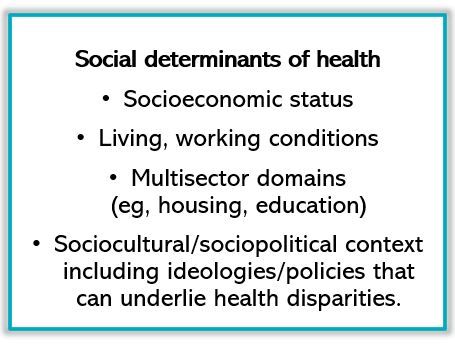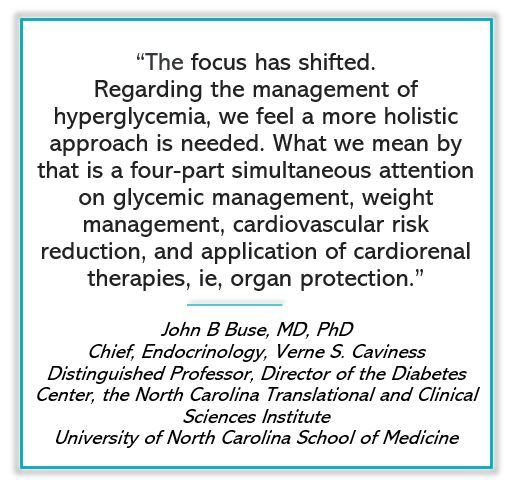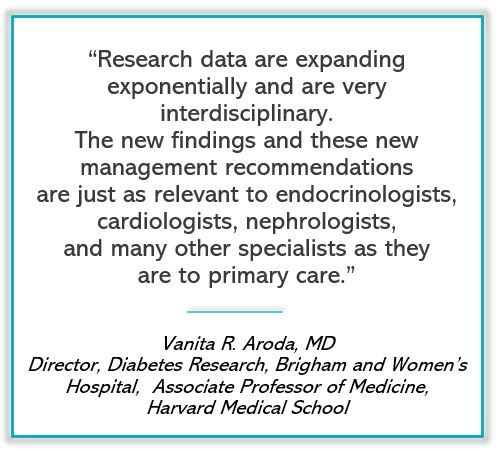ADA, EASD Release Update on Management of Hyperglycemia in Type 2 Diabetes
The American Diabetes Association (ADA) and the European Association for the Study of Diabetes (EASD) on Friday September 23, 2022, announced the release of new consensus recommendations on management of hyperglycemia in type 2 diabetes (T2D).
The latest update to the shared guidance focuses on a more holistic, person-centered approach to care of persons with T2D including a more considered appreciation for equity in care.

The update is informed, according to the introduction, by systematic review of evidence published since 2018 across domains of T2D care. Based on the analysis, the updated recommendations incorporate heightened focus on social determinants of health and the role of the overall health care system in disease management of T2D. The former, the statement notes, are often beyond the individuals control and likely represent lifelong risk that must be incorporated into decisions about care.
Lifestyle. There is also an expanded emphasis on the role of lifestyle modifications in managing hyperglycemia and maintaining optimal health, including additional guidance on physical activity, eg, daily light exercise or resistance training every 30 minutes while sitting, achieving an extra 500 daily steps, strength training 2-3 times per week, and the importance of sleep quantity (6-9 hours/night) and quality.
Weight management. There is significantly deepened and broadened focus on weight management as central to management of hyperglycemia as well as to ameliorate and/or prevent known T2D comorbidities, eg, atherosclerotic cardiovascular disease, heart failure, chronic kidney disease, and for the first time, including nonalcoholic fatty liver disease. Weight reduction in the consensus statement is considered a targeted intervention and a loss of 5% to 15% bodyweight should be a primary management goal for many people with T2D, authors write.

Cardiorenal protection. A set of broadened recommendations for cardiorenal protection in T2D patients at elevated risk for both types of cardiometabolic disease is informed by recent clinical trials and particularly cardiovascular and renal outcomes trials with sodium–glucose cotransporter 2 (SGLT-2) inhibitors and glucagon-like peptide-1 receptor agonists (GLP-1 RA), including assessment of important patient subpopulations. Other updates include recommendations on use of oral GLP-1 RAs, guidance on the novel class of dual GIP/GLP-1 RAs, and appropriate use of combined GLP-1 RA/insulin therapy.
There are many other topics related to person-centered care threaded throughout the new report including guidance on language clinicians use when discussing care with patients (eg, neutral, fact-based, free of bias); ensuring access to diabetes self-management education and support; considering the local care environment and the resources available, and being especially attuned for and avoiding clinical inertia
Synthesis plus guidance. In an edition of ADA Meeting News from the 82nd Scientific Sessions held in June, Robert Gabbay, MD, PhD, ADA chief scientific and medical officer promised the update would include “even more information around the practicalities of implementation than we have included in past updates. The entire joint effort is to not only synthesize the evidence for clinicians, but also to give them the tools to make it happen in their practices and improve the lives of those affected by diabetes.”

In today’s announcement he follows up saying “the wide-ranging report has several new features. It not only speaks of what needs to be done, but it also has a section on how to implement those changes.”
Gabbay refers, in part, to a new section that follows each set of recommendations titled Clinical tips for Clinicians, essentially a bulleted list of “how tos” to put the guidance into daily practice.
Adding to the accessibility of the document’s recommendations are 6 full-page colored graphics that summarize specific aspects of care and T2D management and include at-a-glance profiles of all current classes of glucose-lowering agents, optimal approaches for holistic person-centered T2D management, and recommendations for initiating insulin therapy.
The update was prepared by an international committee of experts that include John B Buse, MD, PhD, (University of North Carolina School of Medicine, Chapel Hill, NC); Melanie J Davies, CBE, MBChB, MD (Leicester Diabetes Centre, Leicester, UK); and their colleagues.
It updates the previous 2018 and 2019 consensus reports, and like its predecessors, is copublished in the ADA journal Diabetes Care and EASD’s journal Diabetologia.